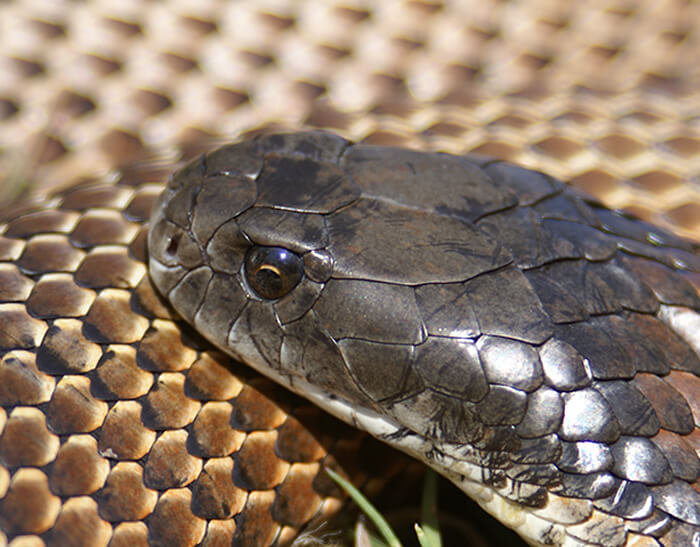Introduction
When it concerns the fascinating globe of snakes, few varieties catch the creativity quite like the infant tiger serpent. Understood Snakebite statistics Australia for their distinctive coloration and powerful poison, these serpents are an essential component of Australia's one-of-a-kind environment. In this detailed article, we will certainly look into various elements of baby tiger serpents, including their behavior, environment, and how to securely communicate with them. Whether you're a wild animals fanatic or merely curious about these animals, recognizing baby tiger snakes can aid cultivate a much deeper gratitude for nature.
Baby Tiger Snakes: What You Need to Find Out About Their Actions and Habitat
What Are Infant Tiger Snakes?
Baby tiger snakes are juvenile types of the very venomous varieties known medically as Notechis scutatus These serpents are primarily discovered in seaside areas of Australia, specifically in Tasmania and southerly Victoria. As they grow, their pigmentation adjustments from a more soft palette to the particular yellow and black bands that provide their name.
One remarkable aspect of infant tiger snakes is their size; hatchlings normally gauge around 25-30 cm in size. In spite of their little stature, they possess an unexpected quantity of poison that can be harmful to people if bitten.
Physical Characteristics
Tiger serpents have several key physical attributes:
- Coloration: The distinct banding pattern usually becomes a lot more obvious as they mature. Size: Grownups can get to lengths of up to 2 meters. Body Shape: They have a durable body that assists in swimming and terrestrial movement.
Where Do Infant Tiger Snakes Live? Recognizing Their Habitat
Understanding the environment preferences of baby tiger serpents is important for both conservation initiatives and public security. These snakes prosper in various settings:
- Wetlands: Marshes and swamps give enough hunting grounds. Coastal Regions: Commonly discovered near beaches where they can search for prey. Woodlands: Dense plants provides cover from predators.
Geographical Distribution
Tiger snakes are predominantly found along Australia's southerly shoreline, including:
- Tasmania: Home to among the most infamous populations. Victoria: Particularly in locations near water bodies.
Are Tiger Snakes Venomous? A Deep Study Their Venom
One common concern emerges when reviewing child tiger snakes: "Are tiger snakes poisonous?" The answer is a definite yes!
Venom Composition
The poison of tiger snakes consists of neurotoxins that can cause paralysis, coagulopathy (blood clotting problems), and possibly death if untreated. Right here's what you need to recognize:
- Effects on Humans: A bite from a tiger serpent can bring about signs like swelling, discomfort at the bite website, queasiness, and even respiratory system failure.
Comparison with Other Poisonous Snakes
In contrast to other Australian snakes such as the eastern brownish serpent or king brownish snake, tiger serpent poison is taken into consideration among the most powerful. Nevertheless, fatalities are unusual as a result of enhanced medical treatments and accessibility to antivenom.
Behavioral Patterns of Baby Tiger Snakes
Understanding just how child tiger snakes act is vital for those that stay in or go to areas where these reptiles are prevalent.

Nocturnal Habits
Most infant tiger serpents show nocturnal actions. They have a tendency to forage for food throughout cooler night temperature levels. This versatility helps them prevent killers while boosting their searching efficiency.
Hunting Techniques
Their searching methods include:

- Ambush Predation: Waiting inactive up until prey comes close. Active Foraging: Proactively moving with vegetation or along rivers searching for food.
First Help for Snake Bites: What You Should Know
Despite being fascinating creatures, experiences with child tiger snakes can lead to harmful situations if attacks occur. Understanding Discover more here first aid treatments can conserve lives.
Immediate Steps After a Bite
Remain calmness; panic boosts heart rate. Immobilize the impacted limb utilizing a splint or bandage. Seek instant medical attention-- antivenom may be necessary.Creating a Snake Bite Emergency Treatment Kit
A well-prepared emergency treatment set should include:
|Thing|Purpose|| ------------------------------|--------------------------------------|| Compression bandage|To incapacitate the arm or leg|| Splint|Stabilizes busted bones or joints|| Antihistamines|Reduces allergic reactions|| Emergency call numbers|Quick gain access to during emergencies|
Common Myths Regarding Tiger Snakes Debunked
Many misconceptions border these appealing reptiles; let's clear up some snake bite first aid pdf false impressions typically held by people.
Myth # 1: All Tiger Snakes Are Aggressive
While some people may display defensive actions when intimidated, not all tiger snakes display hostility towards people unless provoked.
Myth # 2: Infant Tiger Snakes Are Less Hazardous Than Adults
This misconception might not be better from the truth! Child tiger serpents have nearly as much venom as adults relative to their dimension; thus they pose significant risks if bitten.
FAQs Regarding Child Tiger Snakes
What do infant tiger snakes eat?- They mostly consume tiny animals, birds, frogs, and fish.
- Look for slim bodies with pale banding patterns that come to be more noticable as they mature.
- Yes! Birds of victim and larger reptiles may target them.
- Typically every few weeks as they grow rapidly during their early life stages.
- While some individuals do keep them illegally without licenses as a result of their hazardous nature; it's typically not suggested given their poisonous status.
- With punctual medical therapy-- including antivenom-- the survival rate is high!
Conclusion
In summary, recognizing baby tiger snakes-- what they eat, where they live, exactly how they behave-- can equip us with valuable expertise regarding these impressive yet harmful animals. The value of education and learning surrounding emergency treatment steps can not be overemphasized; knowing just how to react properly after a bite can conserve lives while cultivating regard for our slithering next-door neighbors within Australia's rich biodiversity range.
By valuing these serpents' duties within environments-- and acknowledging potential hazards-- we promote conjunction instead of fear-based reactions towards each other's existence in nature's grand tapestry! Whether you're a serious hiker considering your next adventure or simply curious regarding local wild animals encounters near home-- this overview works as your trusted referral factor on the enigmatic world lived in by our buddies-- the amazing baby tiger snake!